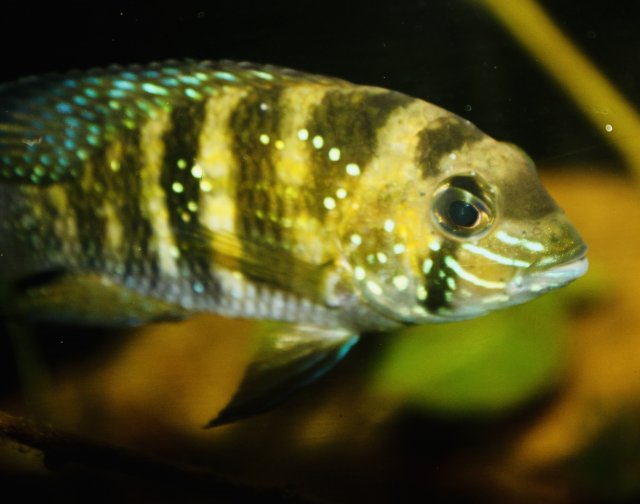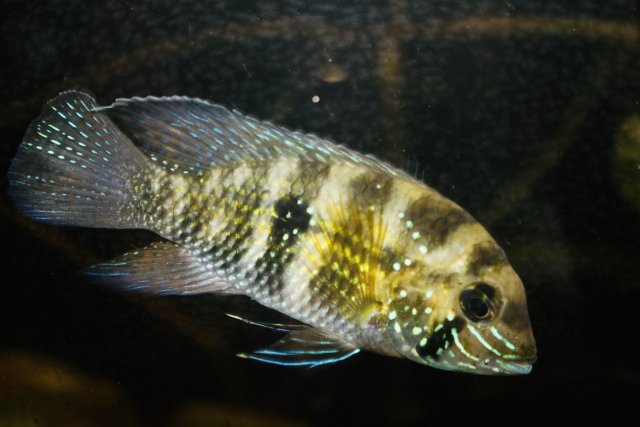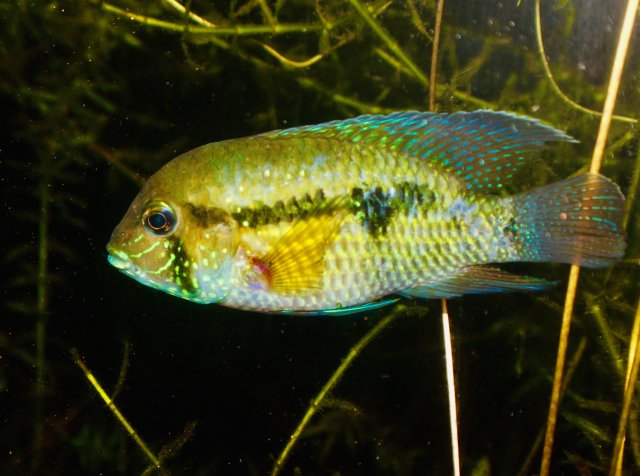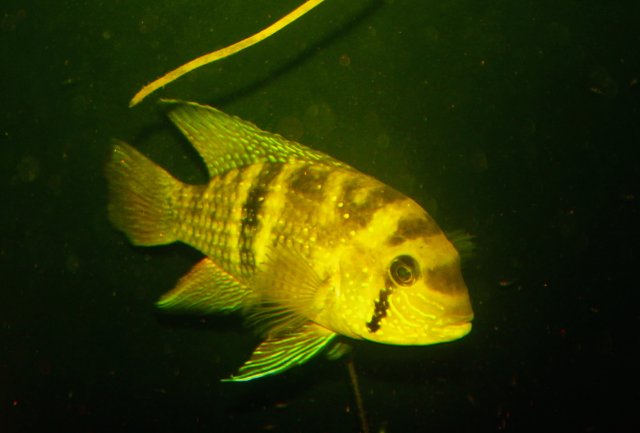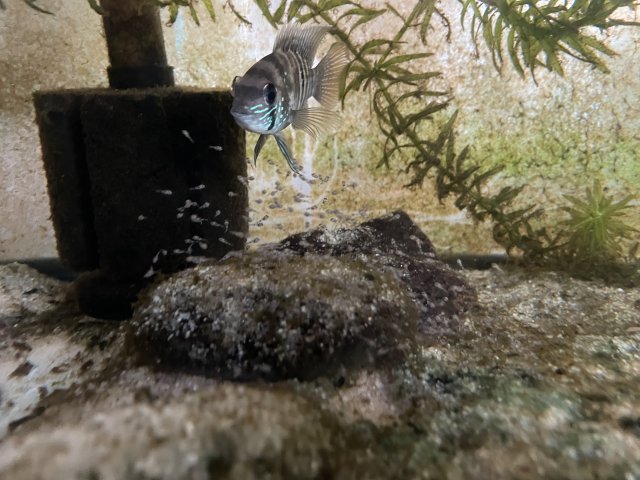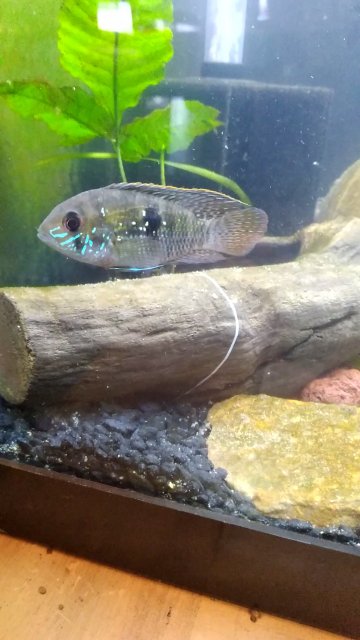Andinoacara cf corueleopunctatus “rio guale”
- Thread starter C. Breeze
- Start date
You are using an out of date browser. It may not display this or other websites correctly.
You should upgrade or use an alternative browser.
You should upgrade or use an alternative browser.
It’s great seeing your fish again, given how close they are to the holotype, rio chagres fish. 3 very distinct populations we’ve been able to examine these Darien gap / rio guale fish, yours and my rio claro Costa Rica fish- all with enough visual cues to ID them as separate populations.
When you look at distribution maps of andinoacara it’s pretty logical that this is the fish you find where the range of rivulatus to the west and latifrons to the east gives out. I’ll add some pictures of the Costa Rica fish later way more green than these, or any rivulatus. Also, very narrow white dorsal seam as opposed to the very prominent white seam these fish have
When you look at distribution maps of andinoacara it’s pretty logical that this is the fish you find where the range of rivulatus to the west and latifrons to the east gives out. I’ll add some pictures of the Costa Rica fish later way more green than these, or any rivulatus. Also, very narrow white dorsal seam as opposed to the very prominent white seam these fish have
Sharp looking fish. 
The pulcher group may yet be split into more species. From what I've read both A. pulcher and A. coeruleopunctatus are widely distributed over diverse habitat and both species are known to be diverse within themselves. An A. coeruleopunctatus in a stream on one side of a mountain can look different from an A. coeruleopunctatus in a stream on the other side of a mountain. Like some other genera with very similar looking species (unless you're counting scales or fin rays, looking at dental differences, breeding differences, etc.) as well as geographical variation within species, the result can be wrong guesses at IDs or mistakenly suggesting a specimen is a hybrid based on color, fin markings, etc. that look different from type photos or "look different from from the ones I had." Imo another overlooked factor in attempting to distinguish some very similar looking species based on online photos is how much markings or color can overlap between populations of very similar species or change according to lighting, substrate, mood, etc. In a few cases, now that I know more about them, I'm less sure now about certain species I thought I could identify fairly easily a few years ago.
Never mind the hobby experts, even the real experts get fooled. I forget the species and would have to search again for the paper, but even Ad Konings has been fooled, at one point identifying an Aulonocara in two locations as the same species based on color and markings that turned out to be two different species when more closely examined.
Regarding A. coeruleopunctatus:
https://pubmed.ncbi.nlm.nih.gov/23008800/

The pulcher group may yet be split into more species. From what I've read both A. pulcher and A. coeruleopunctatus are widely distributed over diverse habitat and both species are known to be diverse within themselves. An A. coeruleopunctatus in a stream on one side of a mountain can look different from an A. coeruleopunctatus in a stream on the other side of a mountain. Like some other genera with very similar looking species (unless you're counting scales or fin rays, looking at dental differences, breeding differences, etc.) as well as geographical variation within species, the result can be wrong guesses at IDs or mistakenly suggesting a specimen is a hybrid based on color, fin markings, etc. that look different from type photos or "look different from from the ones I had." Imo another overlooked factor in attempting to distinguish some very similar looking species based on online photos is how much markings or color can overlap between populations of very similar species or change according to lighting, substrate, mood, etc. In a few cases, now that I know more about them, I'm less sure now about certain species I thought I could identify fairly easily a few years ago.
Never mind the hobby experts, even the real experts get fooled. I forget the species and would have to search again for the paper, but even Ad Konings has been fooled, at one point identifying an Aulonocara in two locations as the same species based on color and markings that turned out to be two different species when more closely examined.
Regarding A. coeruleopunctatus:
https://pubmed.ncbi.nlm.nih.gov/23008800/
Here, we test the hypothesis that due to their relatively greater dispersal capabilities, the neotropical cichlid species Andinoacara coeruleopunctatus will display a phylogeographic pattern that differs from previously described biogeographic assemblages in this important region. Based on an analysis of 318 individuals using mtDNA ATPase 6/8 sequence and restriction fragment length polymorphism data, we found eight distinct clades that are closely associated with biogeographic patterns.
Last edited:
I’ve brought my rio claro Costa Rica Coeru in and after being able to watch them alongside these in glass I’m of the opinion they’re not the same fish. Maybe latifrons from way way outside there known range or- maybe something new. I’m leaning toward something new just based on the fish I have kept in the past and what I have currently. Here are the rio guale fish again, the subject of the thread I know I ramble about the other fish- but I haven’t posted pictures of them in this thread 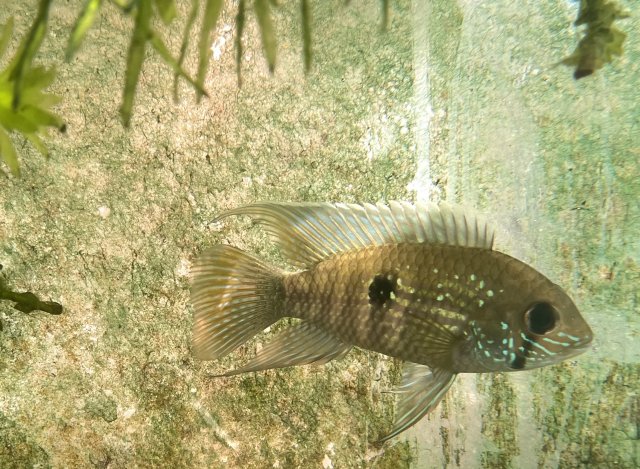
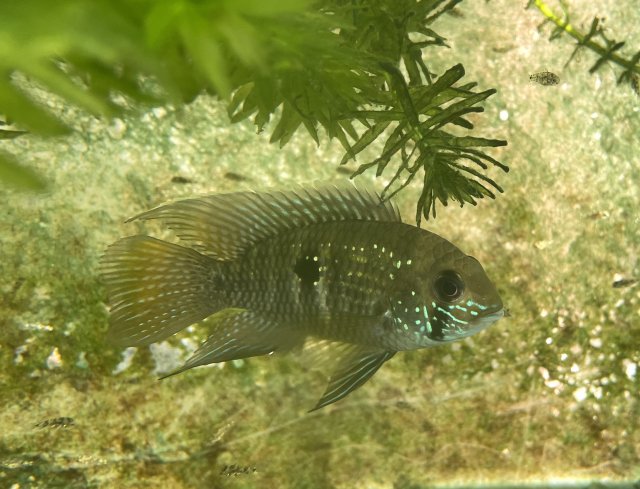
Of my group of 6 fish I have 2 pairs and 2 that are effectively dithers / targets at this point.
this 2nd pair is guarding wrigglers now. Seen as a little brown mass down between/ next to the rocks
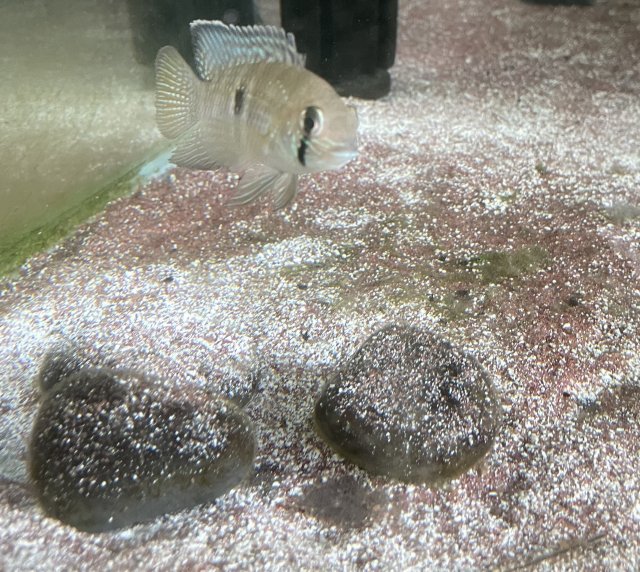
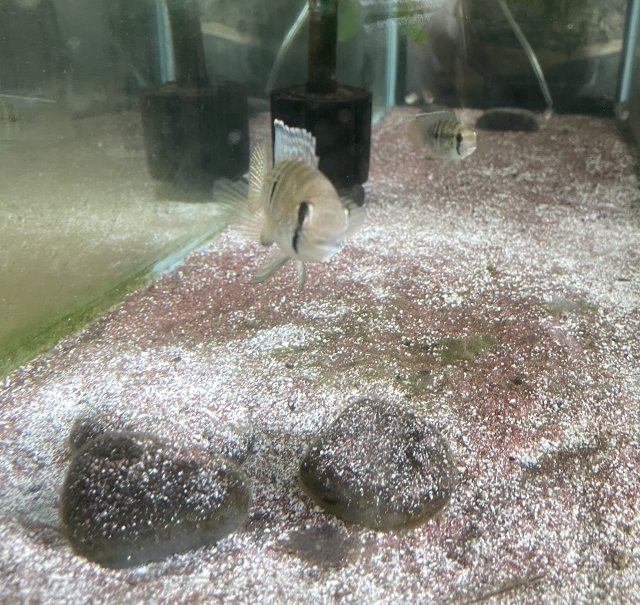
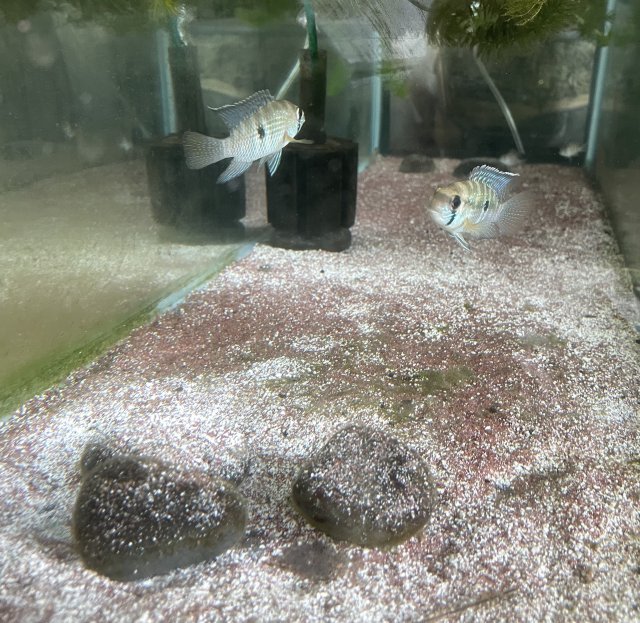


Of my group of 6 fish I have 2 pairs and 2 that are effectively dithers / targets at this point.
this 2nd pair is guarding wrigglers now. Seen as a little brown mass down between/ next to the rocks



Last edited:
i might have a pic of the ones i collected 20+ years ago around golfito, costa rica they grew to be about 5” very bulky and goldish similar to body shape of pulcher..they actually them at the aca this year a fish i never saw in person besides the ones i was keeping, first cichlid i ever saw, collected and spawned from the wild..
So these are the coeruleopunctatus? The identification of these fish are ridiculously hard for someone that doesn't have several alongside one another to view. I'd be curious to know what I have myself.I’ve brought my rio claro Costa Rica Coeru in and after being able to watch them alongside these in glass I’m of the opinion they’re not the same fish. Maybe latifrons from way way outside there known range or- maybe something new. I’m leaning toward something new just based on the fish I have kept in the past and what I have currently. Here are the rio guale fish again, the subject of the thread I know I ramble about the other fish- but I haven’t posted pictures of them in this thread View attachment 1472715
View attachment 1472716
Of my group of 6 fish I have 2 pairs and 2 that are effectively dithers / targets at this point.
this 2nd pair is guarding wrigglers now. Seen as a little brown mass down between/ next to the rocks
View attachment 1472717
View attachment 1472718
View attachment 1472719


